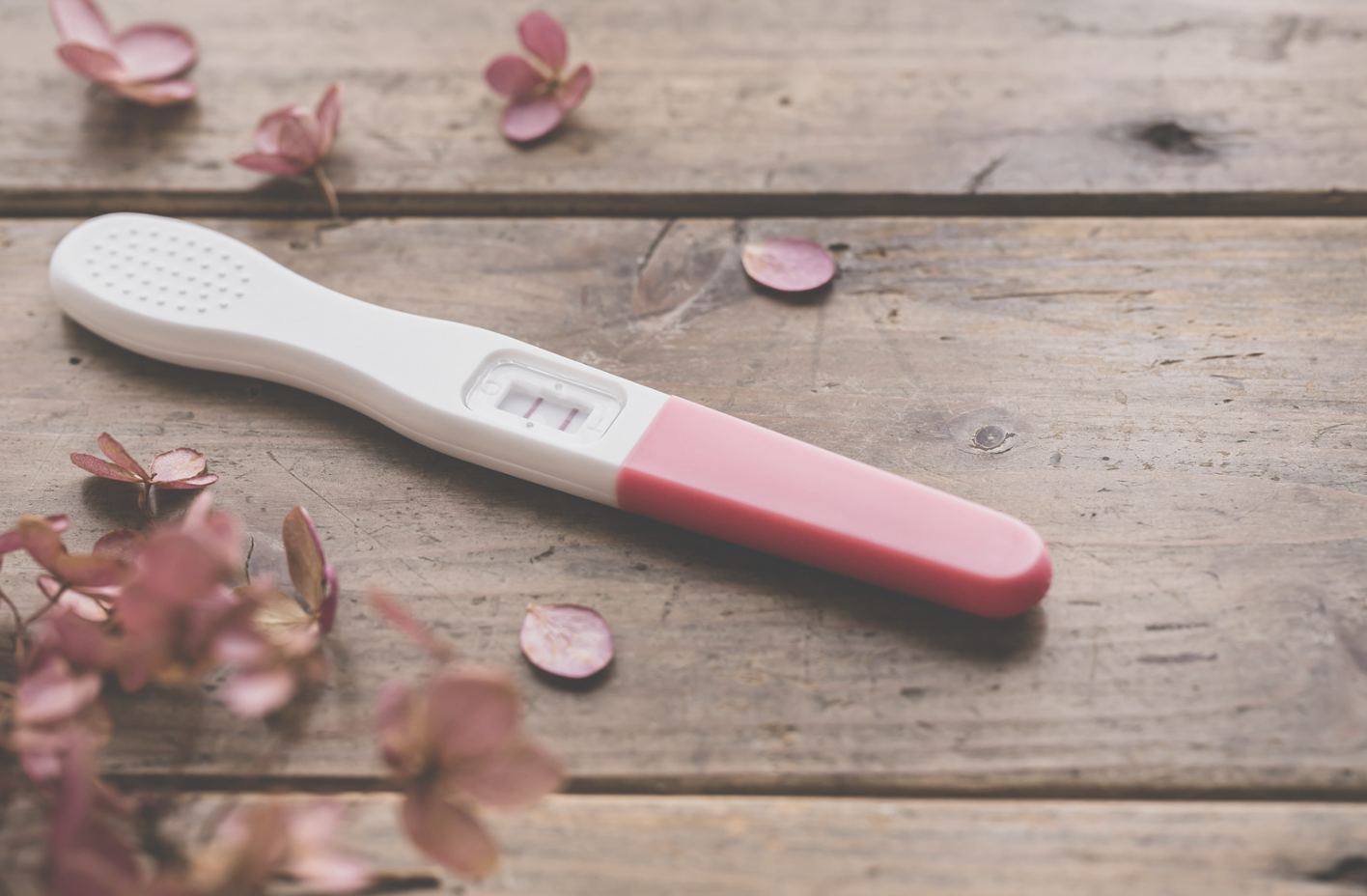TTC? How to Accurately Calculate Ovulation — Even with Irregular Cycles or PCOS
If you're trying to conceive and your cycles are unpredictable, you may feel like you're constantly guessing. The apps say ovulation happens on Day 14... but you know your body doesn't follow a textbook. Maybe you’ve been told you’re not ovulating. Or maybe you've seen your cycle length jump from 28 to 40 days without warning.
If this sounds familiar — you're not alone. Let’s break down how to calculate your ovulation date — even with irregular periods, PCOS, or hormonal imbalance — using real markers from your body.
💌 Want to start tracking with ease?
Download my Cycle Day 3 Hormone Cheat Sheet — a simple, one-page guide that helps you understand test timing, hormone ranges, and what your mucus is really telling you.
[Get the Free Download]
What Most People Get Wrong About Ovulation
Most literature given to women assumes:
A 28-day cycle
Ovulation on Day 14
Perfectly timed periods
But here’s the truth:
Many women ovulate earlier or later, depending on stress, thyroid, hormones, or egg reserve
With PCOS or irregular cycles, ovulation can shift dramatically — or not happen at all in some cycles
Relying only on calendar apps can cause you to miss your fertile window entirely
Normal vs. Irregular Cycles: How to Tell the Difference
A “normal” menstrual cycle typically lasts between 25 and 35 days, counting from the first day of full bleeding (Cycle Day 1) to the day before your next period begins. While the average cycle is often cited as 28 days, it’s completely healthy for your personal cycle to be a few days shorter or longer — as long as it’s consistent. A change from 28 days one month to 30 the next is still within the normal range. Keep reading to understand what qualifies as irregular.
What makes a cycle irregular?
A menstrual cycle is considered irregular when the length varies significantly from month to month — for example, one cycle might be 26 days and the next is 40. This can be caused by stress, PCOS, thyroid issues, perimenopause, or hormone imbalances that disrupt ovulation. If you're not ovulating regularly, your period may arrive unpredictably, or not at all. The key is not just tracking when you bleed, but understanding why the timing keeps shifting — and what your body is trying to tell you.
💌 Want a free sample page of the CD3 Tracker?
Download my Cycle Day 3 Hormone Cheat Sheet — a simple one-page guide to test timing, hormone ranges, and mucus clues.
[Get the Free Download]
Understanding a Typical Menstrual Cycle: A Simple Breakdown
If you’re trying to calculate ovulation, it helps to first understand how the menstrual cycle actually works. Most people only hear about “bleeding” and “ovulation” — but there are four key phases your body moves through each month:
1. Menstrual Phase (Bleeding)
When it happens: Day 1–5 (this can vary)
What’s happening: Your body is shedding the lining of your uterus because pregnancy didn’t happen
How it feels: Cramping, bleeding, and sometimes low energy
🩸 Fun fact: Cycle Day 1 is the first day of full bleeding, not spotting. That’s where we start tracking your cycle!
2. Follicular Phase
When it happens: Day 1–13 (overlaps with your period at the start)
What’s happening: Your brain releases a hormone (FSH) that tells your ovaries to grow follicles. One will become dominant and carry the egg you’ll release
How it feels: Rising energy, more cervical mucus, and maybe clearer skin
🌟 This is a great time to use castor oil packs or yoni steaming to support circulation and egg quality.
3. Ovulation Phase
When it happens: Usually around Day 14, but varies widely!
What’s happening: Your body gets a surge of LH (luteinizing hormone), which triggers your ovary to release an egg
How it feels: You may notice egg-white cervical mucus, a twinge in one side of your pelvis (called Mittelschmerz), and a small mood boost
🥚 The egg only lives for 12–24 hours — but sperm can live up to 5 days, so your fertile window may last about 6 days (note: it shortens as you get older)
4. Luteal Phase
When it happens: Day 15–28 (or until your next period starts)
What’s happening: After ovulation, your body produces progesterone to prepare for a possible pregnancy
How it feels: Mood shifts, tender breasts, warmer body temperature — or, if pregnant, implantation signs
🌙 This is when the Two Week Wait (2WW) happens — the time between ovulation and your period or pregnancy test.
Why This Matters for TTC
Most literature to get pregnant supports ovulation occurring around day 14 — but that’s only true if your cycle is 28 days and perfectly regular. If you have:
Long cycles: You might not ovulate until Day 20 or later — one of my clients ovulated on Day 25 and went on to have a healthy pregnancy and baby.
Short cycles: You could ovulate as early as Day 8
PCOS: You might skip ovulation some months.
That’s why tracking signs like cervical mucus and testing your hormones with CD3 labs gives you real answers instead of guesswork.
How to Track Ovulation When You Have Irregular Cycles or PCOS
If your cycles are unpredictable, you’ve probably felt frustrated, confused, or even like your body is broken. But here’s the truth: you can still track ovulation — even if your cycle is different every month.
You just need the right tools and a deeper understanding of your body's signs.
Step 1: Identify Your Cycle Day 1
Before you track anything, you need to know where your cycle starts. Cycle Day 1 is the first day of full bleeding (not spotting).
This helps you count forward to find patterns in your follicular and ovulatory phases.
Example: If full bleeding starts on August 5th, that’s Cycle Day 1.
Step 2: Observe Your Cervical Mucus Daily
Cervical mucus changes throughout your cycle — from dry, to sticky, to creamy, and finally to egg-white (your most fertile sign). With PCOS, you might see prolonged creamy mucus or false patches of EWCM. That’s why tracking daily is key — look for your last EWCM patch followed by a dry-up or temp rise. Once you’re observing cervical mucus, the next step is to look at what’s happening under the surface — your hormone levels.
Step 3: Test Hormones on Cycle Day 3
Running a CD3 hormone panel gives you a snapshot of your baseline hormone health. This is crucial for irregular cycles and PCOS.
Ask your provider (or lab) to test:
FSH – follicle-stimulating hormone
LH – luteinizing hormone
Estradiol (E2)
AMH – ovarian reserve (optional)
Prolactin – can block ovulation if high
Tracking your numbers helps you understand your baseline and what might be going on behind the scenes. It’s especially helpful to compare results over time — like when you’ve had multiple CD3 panels run or noticed changes in your cervical mucus patterns.
📝 Want to make tracking easier?
Download my free Cycle Day 3 Hormone Cheat Sheet — a one-page guide for test timing, hormone ranges, and mucus clues.
Step 4: Use LH Test Strips (But Don’t Rely on Them Alone)
Ovulation predictor kits (OPKs) measure your luteinizing hormone surge in urine.
Here’s how to use them:
Start testing 5–6 days before expected ovulation
Test around 12-2pm for most accurate results
A strong test line = possible LH surge
⚠️ BUT — in PCOS, LH can spike without ovulation actually happening. So only use OPKs alongside CM and/or temperature tracking.
Why PCOS Can Cause False LH Surges
PCOS is often associated with higher-than-average levels of LH throughout the cycle. This means:
You might see multiple positive OPKs in one cycle — even when no ovulation occurs
LH can surge and fall repeatedly without triggering egg release
You could be mistaking a hormonal fluctuation for your actual fertile window
This is why relying solely on OPKs can be especially frustrating for those with PCOS. You may think you're timing things right — but in reality, ovulation hasn’t even occurred. That’s why pairing LH tests with cervical mucus tracking or temperature shifts gives you a more complete picture.
✨ Mercier Therapy has helped many of my PCOS clients to properly ovulate, which led to happy, natural pregnancies. Take a look at the clinical studies.
Optional: Track Basal Body Temperature (BBT)
If you’re motivated and consistent, BBT can help confirm that ovulation has already happened (not predict it).
Take your temp first thing in the morning
Look for a rise of at least 0.5°F or 0.3°C that stays up for 3+ days
📈 Ovulation is confirmed by a sustained temp rise — but the egg is long gone by then. Use this method to spot patterns over time, not to time sex.
🌸 Ready for deeper guidance?
The CD3 Hormone Tracker & Workbook helps you interpret your hormone labs and mucus patterns — so you can identify ovulation with confidence.
Common Mistakes When Tracking Ovulation
Let’s take a moment to clear up a few mistakes I see often — even in women who are incredibly committed to their TTC journey:
Relying only on apps – Once my clients track their bodies (not just apps), pregnancy often follows — even after months or years of trying.
Believing ovulation always happens on day 14 – Everyone’s cycle is different, so that number means nothing.
Using OPKs without understanding LH behavior in PCOS – Can lead to having sex on the wrong “positive” day.
Misidentifying Cycle Day 1 – Counting spotting as CD1 can throw off your timing and cause you to miss ovulation altogether.
Skipping mucus tracking – Or thinking “dry” means you’ve already ovulated, when it may not be the case.
Every body is different — and learning yours is the most powerful step you can take.
What You Can Do Differently Starting Now
If you're ready to stop guessing and start taking empowered action, here’s what you can begin doing today:
✔️ Understand your cycle phases and what each one means
✔️ Track your own real-time fertility signs instead of relying on predictions
✔️ Get your Cycle Day 3 labs and learn what they reveal about your hormones
✔️ Pair your LH testing with cervical mucus observations — not one or the other
✔️ Start charting everything in one place using our CD3 Hormone + Mucus Tracker
You don’t need to become a medical expert — you just need better tools, support, and the willingness to learn your body’s rhythms. Trust me, it’s not only possible, it’s powerful.
Real Stories from the Sacred Feminine Wellness Community
From PCOS Confusion to Natural Conception
One of my clients came to me with wildly irregular cycles — sometimes 35 days, sometimes 48 — and a diagnosis of PCOS. She was emotionally drained after 12 failed fertility treatments and years of relying on apps that never aligned with what her body was actually doing.
Together, we set the apps aside and began charting her cervical mucus daily.
We reviewed her Cycle Day 3 labs and uncovered hormonal imbalances that were interfering with ovulation. Through this deeper awareness — paired with fertility massage and holistic support — she began recognizing her ovulation patterns for the first time.
Within just 2.5 months of this body-led approach, she conceived naturally — no medications, no IUIs, no more confusion.
In fact, she found out she was pregnant just days before her IVF consultation — and cancelled it with joy and disbelief.
Just body awareness, targeted support, and a renewed trust in her own timing.
Her journey wasn’t broken — it was simply waiting for the right map.
This is what happens when women are given tools instead of guesswork.
When we understand our labs, listen to our bodies, and shift from “trying everything” to choosing what’s aligned — everything changes.
High Estrogen, Ovarian Cyst — Healed Through Body Awareness
Another client came to me with elevated estrogen due to an ovarian cyst. Her doctors were monitoring it — but not offering a plan outside of watchful waiting.
Through Yoni Steaming, intentional tracking, and gentle, womb-centered support, she watched her estrogen return to a healthy range. Her doctor later confirmed the cyst had fully resolved.
She told me:
“Without tracking, I never would’ve believed this was possible.”
IVF Told Her to Wait — Her Body Had Other Plans
One client had gone through two rounds of IVF. After her second retrieval resulted in no eggs, her clinic told her to “just wait for your next period.”
But because she’d been using her CD3 Tracker, she noticed her cervical mucus shifting — something most clinics never teach women to observe.
She confirmed ovulation on Day 50 — a moment she would have completely missed if she had waited passively.
She told me:
“This knowledge put the power back in my hands — not in the clinic’s calendar.”
At the time of writing this, she’s still awaiting pregnancy results — but what’s already changed is her relationship to her body.
What All These Women Have in Common
What’s especially powerful is that all three of these clients are nurses — women trained in conventional medicine, who still weren’t taught how to understand their own cycles.
Despite their clinical backgrounds, they came to me feeling confused, dismissed, or unsure about their fertility. Once they began tracking their hormones through the CD3 Tracker and reconnecting with their body’s signs — everything changed.
It just goes to show: even inside the system, women are still being left out of the full conversation about their reproductive health.
Final Thoughts
You don’t need a perfect 28-day cycle to conceive. And you definitely don’t need to keep guessing when you’re ovulating.
By understanding your body’s signs — and using supportive tools like hormone tracking and mucus awareness — you can finally feel in control of your fertility journey.
Whether you’re just starting to track or you’ve been TTC for a while with irregular cycles, remember: your body isn’t broken — it’s just asking for better communication.
💌 Want a sneak peek inside the CD3 Tracker?
Get my Cycle Day 3 Hormone Cheat Sheet — your one-page roadmap to hormone test timing, healthy ranges, and real-world fertility tracking.
[Get the Free Download]
🌸 Ready for the full system? Upgrade to the CD3 Hormone Tracker & Workbook — your complete charting toolkit.
[Get Instant Access]





